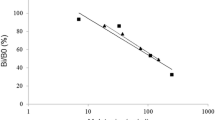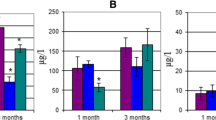Abstract
The effects of the photoperiodic conditions in northwestn Russia (Republic of Karelia, Petrozavodsk) and exogenous melatonin on the body weight and the physiological and biochemical parameters of blood serum in males and females of the Syrian hamster (Mesocricetus auratus) were studied. The animals were divided into two groups: control (LD: 12 h light/12 h darkness) and experimental (NL: decrease in the duration of the daylight phase from 19:36/4:24 to 12/12, which was typical for the Republic of Karelia from June 25, 2018, to September 25, 2018). Each group was divided into two subgroups: hamsters of the first subgroup received drinking water without melatonin (LD, NL), the second group received melatonin (100 μg/animal) at night (LD + mel, NL + mel). Males were found to be the most sensitive to the change in the photoperiod: the NL conditions led to an increase in feed intake, and body weight in the middle of the experiment, and total cholesterol and urea levels by the end of the experiment, while the activities of amylase, lactate dehydrogenase, and aspartate aminotransferase in the blood were lower than in LD. The melatonin effect on the studied parameters depended on the conditions and sex of the animals. Melatonin treatment of the NL-females caused enhancement in the effect of the light regime and increase in most of the biochemical parameters of blood serum compared to the control as well as an increase in body weight for the entire study period. The use of melatonin in the LD conditions had a negative effect on the Syrian hamsters, causing intensification of metabolic processes and, as a result, a significant decrease in body weight in both males and females. In our opinion, the revealed differences between the experimental groups are primarily associated with a change in the synthesis of melatonin by the pineal gland in various light conditions.


Similar content being viewed by others
REFERENCES
Arendt, J., Melatonin: Characteristics, concerns, and prospects, J. Biol. Rhythms, 2005, vol. 20, no. 4, pp. 291–303.
Anisimov, V.N., Vinogradova, I.A., Bukalev, A.V., Popovich, I.G., Zabezhinskii, M.A., Panchenko, A.V., Tyndyk, M.L., and Yurova, M.N., Light desynchronosis and the risk of malignant neoplasms in laboratory animals: The state of the problem, Vopr. Onkol., 2014, vol. 60, no. 2, pp. 15–27.
Madahi, P.G., Ivan, O., Adriana, B., Diana, O., and Carolina, E., Constant light during lactation programs circadian and metabolic systems, Chronobiol. Int., 2018, vol. 35, no. 8, pp. 1153–1167.
Nelson, R.J. and Chbeir, S., Dark matters: Effects of light at night on metabolism, Proc. Nutr. Soc., 2018, vol. 77, no. 3, pp. 223–229.
Moreno, J.P., Crowley, S.J., Alfano, C.A., and Thompson, D., Physiological mechanisms underlying children’s circannual growth patterns and their contributions to the obesity epidemic in elementary school age children, Obes. Rev., 2020, vol. 21, no. 3.
Touitou, Y., Reinberg, A., and Touitou, D., Association between light at night, melatonin secretion, sleep deprivation, and the internal clock: Health impacts and mechanisms of circadian disruption, Life Sci., 2017, vol. 173, pp. 94–106.
Vinogradova, I. and Anisimov, V., Melatonin prevents the development of the metabolic syndrome in male rats exposed to different light/dark regimens, Biogerontology, 2013, vol. 14, no. 4, pp. 401–409.
Rapoport, S.I., Chronomedicine, circadian rhythms. Who cares?, Klin. Med., 2012, vol. 90, no. 8, pp. 73–75.
Ding, A.J., Zheng, S.Q., Huang, X.B., Xing, T.K., Wu, G.S., Sun, H.Y., Qi, S.H., and Luo, H.R., Current perspective in the discovery of anti-aging agents from natural products, Nat. Prod. Bioprospect, 2017, vol. 7, no. 5, pp. 335–404.
Cipolla-Neto, J., Amaral, F.G., Afeche, S.C., Tan, D.X., and Reiter, R.J., Melatonin, energy metabolism, and obesity: A review, J. Pineal Res., 2014, vol. 56, no. 4, pp. 371–381.
Andersen, L.P., Gogenur, I., Rosenberg, J., and Reiter, R.J., The safety of melatonin in humans, Clin. Drug Invest., 2016, vol. 36, no. 3, pp. 169–175.
Chayama, Y., Ando, L., Tamura, Y., Miura, M., and Yamaguchi, Y., Decreases in body temperature and body mass constitute pre-hibernation remodelling in the Syrian golden hamster, a facultative mammalian hibernator, R. Soc. Open Sci., 2016, vol. 3, no. 4.
Pévet, P. and Challet, E., Melatonin: Both master clock output and internal time-giver in the circadian clocks network, J. Physiol. (Paris), 2011, vol. 105, nos. 4–6, pp. 170–182.
Bartness, T.J. and Wade, G.N., Photoperiodic control of seasonal body weight cycles in hamsters, Neurosci. Biobehav. Rev., 1985, vol. 9, no. 4, pp. 599–612.
Mukherjee, A. and Haldar, C., Photoperiodic regulation of melatonin membrane receptor (MT1R) expression and steroidogenesis in testis of adult golden hamster, Mesocricetus auratus,J. Photochem. Photobiol. B, 2014, vol. 140, pp. 374–380.
Chakir, I., Dumont, S., Pévet, P., Ouarour, A., Challet, E., and Vuillez, P., Pineal melatonin is a circadian time-giver for leptin rhythm in syrian hamsters, Front. Neurosci., 2015, vol. 9, p. 190.
Horton, T.H., Buxton, O.M., Losee-Olson, S., and Turek, F.W., Twenty-four-hour profiles of serum leptin in siberian and golden hamsters: Photoperiodic and diurnal variations, Horm. Behav., 2000, vol. 37, no. 4, pp. 388–398.
Tamarkin, L., Westrom, W.K., Hamill, A.I., and Goldman, B.D., Effect of melatonin on the reproductive systems of male and female Syrian hamsters: A diurnal rhythm in sensitivity to melatonin, Endocrinology, 1976, vol. 99, no. 6, pp. 1534–1541.
Terrón, M.P., Delgado-Adámez, J., Pariente, J.A., Barriga, C., Paredes, S.D., and Rodríguez, A.B., Melatonin reduces body weight gain and increases nocturnal activity in male Wistar rats, Physiol. Behav., 2013, vol. 118, pp. 8–13.
Shpakov, A.O. and Derkach, K.V., Gonadoliberin: Synthesis, secretion, molecular mechanisms and targets of action, Acta Biomed. Sci., 2019, vol. 4, no. 2, pp. 7–15.
Jaworek, J., Szklarczyk, J., Jaworek, A.K., Nawrot-Porąbka, K., Leja-Szpak, A., Bonior, J., and Kot, M., Protective effect of melatonin on acute pancreatitis, Int. J. Inflammation, 2012, vol. 2012.
Jaworek, J., Leja-Szpak, A., Nawrot-Porąbka, K., Szklarczyk, J., Kot, M., Pierzchalski, P., Góralska, M., Ceranowicz, P., Warzecha, Z., Dembinski, A., and Bonior, J., Effects of melatonin and its analogues on pancreatic inflammation, enzyme secretion, and tumorigenesis, Int. J. Mol. Sci., 2017, vol. 18, no. 5, p. 1014.
Zhang, J.J., Meng, X., Li, Y., Zhou, Y., Xu, D.P., Li, S., and Li, H.B., Effects of melatonin on liver injuries and diseases, Int. J. Mol. Sci., 2017, vol. 18, no. 4, p. 973.
Reiter, R.J., The melatonin message: Duration versus coincidence hypotheses, Life Sci., 1987, vol. 40, no. 22, pp. 2119–2131.
Larimer, S.C., Fritzsche, P., Song, Z., Johnston, J., Neumann, K., Gattermann, R., McPhee, M.E., and Johnston, R.E., Foraging behavior of golden hamsters (Mesocricetus auratus) in the wild, J. Ethol., 2011, vol. 29, no. 2, pp. 275–283.
ACKNOWLEDGMENTS
The authors express their gratitude to the staff of the Laboratory of Ecological Physiology of Animals, Institute of Biology, Karelian Research Center, Russian Academy of Sciences, for their help in conducting the experiment.
Funding
The study was carried out under the state order (project no. 0218-2019-0073).
Author information
Authors and Affiliations
Corresponding author
Ethics declarations
Conflict of interests. The authors declare that they have no conflict of interest.
Statement on the welfare of animals. The experiments were carried out in compliance with the international principles of the European Union Directive 2010/63/EU on humane treatment of animals and rules for work with experimental animals, as well as the ethical standards of working with animals established by the Ethical Commission of the Institute of Biology (Karelian Research Center, Russian Academy of Sciences).
Additional information
Translated by I. Shipounova
About this article
Cite this article
Antonova, E.P., Ilyukha, V.A. & Kalinina, S.N. Effects of Northwest Russia’s Photoperiodic Conditions and Exogenous Melatonin on Physiological and Biochemical Parameters in Syrian Hamsters (Mesocricetus auratus). Moscow Univ. Biol.Sci. Bull. 75, 117–124 (2020). https://doi.org/10.3103/S0096392520030013
Received:
Revised:
Accepted:
Published:
Issue Date:
DOI: https://doi.org/10.3103/S0096392520030013




